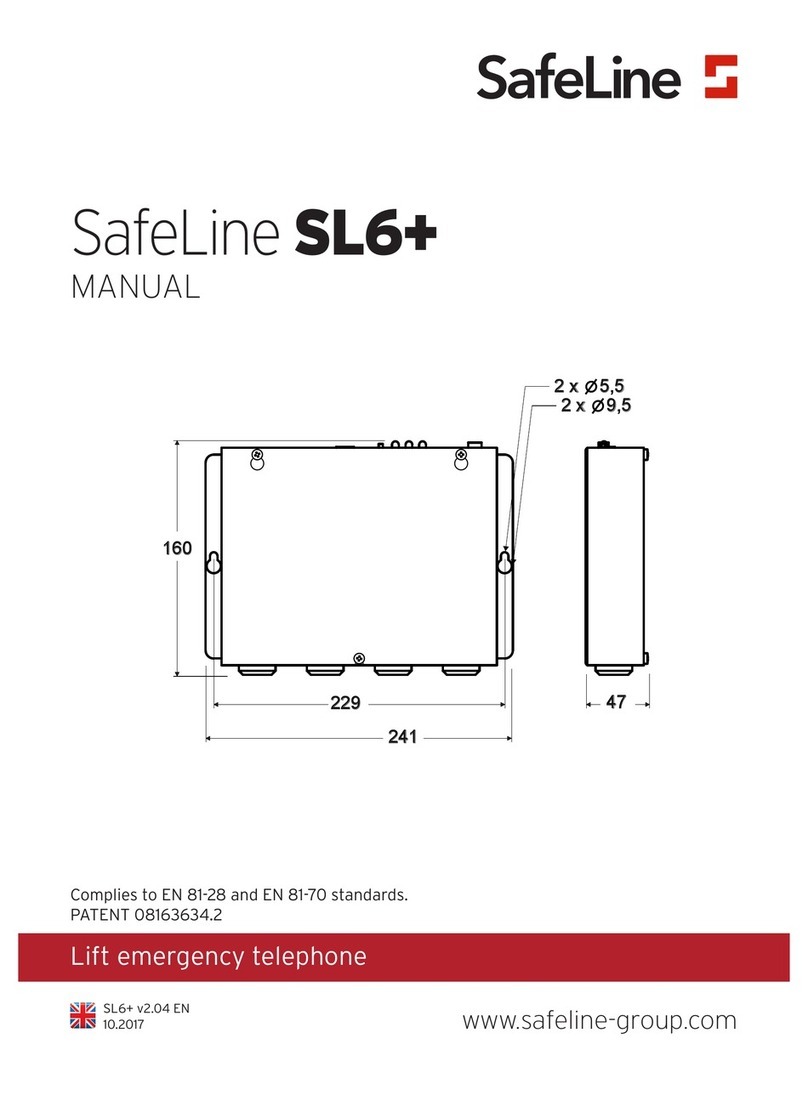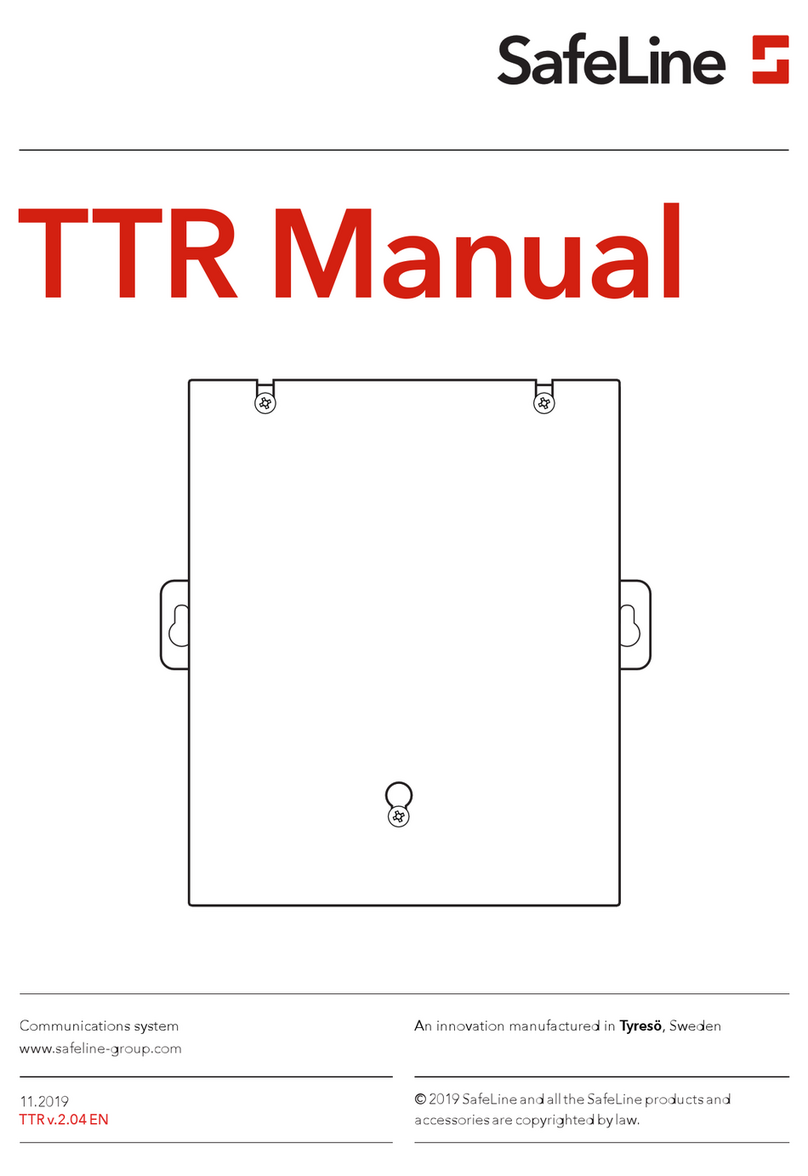
4SafeLine TTR v.2.2.0 EN
This unit was built with state-of-
the-art technology and to
generally recognised safety
related technical standards
currently applicable. These
installation instructions are
to be followed by all people
working with the unit, in both
installation and maintenance.
It is extremely important that
these installation instructions
are made available at all times
to the relevant technicians,
engineers or servicing and
maintenance personnel. The
basis prerequisite for safe
handling and trouble free
operation of this system is a
sound knowledge of the basic
and special safety regulations
concerning conveyor techno-
logy, and elevators in particular.
The unit may only be used for
its intended purpose. Note in
particular that, no unauthorised
changes or additions may be
made inside the unit or indivi-
dual components.
Exclusion of liability
The manufacturer is not liable
with respect to the buyer of
this product or to third parties
for damage, loss, costs or work
incurred as a result of accidents,
misuse of the product, incorrect
installation or illegal changes,
repairs or additions. Claims
under warranty are likewise
excluded in such cases. The
technical data is the latest
available. The manufacturer
accepts no liability arising from
printing errors, mistakes or
changes.
Declaration of conformity
Download ”The declaration of
conformity” at our website:
www.safeline-group.com
Safety Precautions!
- Only trained professionals,
who are authorised to work on
the equipment, should install
and con gure this product.
- This quality product is dedi-
cated for the lift industry. It has
been designed and manufactu-
red to be used for its speci ed
purpose only. If it is to be used
for any other purpose, SafeLine
must be contacted in advance.
- It should not be modi ed
or altered in any way, and
should only be installed and
con gured strictly following the
procedures described in this
manual.
- All applicable health and
safety requirements and
equipment standards should be
considered and strictly adhered
to when installing and con -
guring this product.
- After installation and con -
guration this product and the
operation of the equipment
should be fully tested to ensure
correct operation before the
equipment is returned to
normal use.
Electrical and electronic
products may contain materials,
parts and units that can be
dangerous for the environment
and human health. Please
inform yourself about the local
rules and disposal collection
system for electrical and
electronic products. The correct
disposal of your old product
will help to prevent negative
consequences for the environ-
ment and human health.
General
information





























